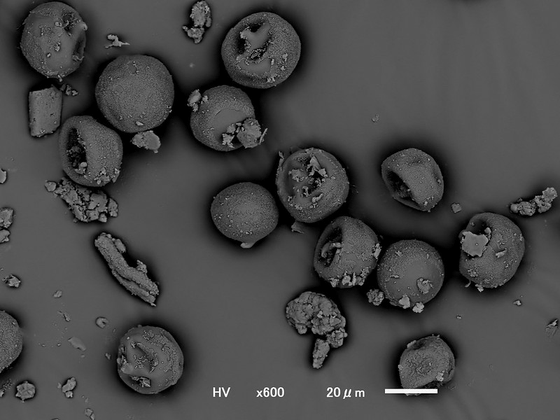Research is underway to use pollen to make paper and sponges

by
While pollen plays an important role in plant reproduction, some plant pollen can also be a nuisance to humans, causing hay fever. Professor Cho Nam-jun of the Department of Materials Science and Engineering at Nanyang Technological University in Singapore is researching a technology to process pollen into materials such as paper, film, and sponges, according to the international news site Ars Technica.
Using pollen to make paper, sponges, and more
https://arstechnica.com/science/2025/08/using-pollen-to-make-paper-sponges-and-more/
'Many people think of pollen as useless garbage other than as fertilizer for plants and food for insects, but it has valuable uses if you know how to use it,' Professor Cho said.
Pollen grains are enveloped in an outer shell made of a substance called sporopollenin , which protects the DNA contained in pollen and spores from the harsh terrestrial environment of light, heat, cold, and dryness. Without this tough shell, plants would not be able to reproduce on land.

by
Sporopollenin is so strong that it has been found intact in rocks dating back 500 million years, and has been reported to have maintained its stability even under pressures of 725 tons per square inch, earning it the nickname 'the diamond of the plant world.'
Scientists are looking into the sporopollenin shell, and are investigating whether it can be used to encapsulate drugs into the body. Professor Cho and his colleagues are also conducting research to explore whether the sporopollenin shell of pollen can be used for other purposes.
Then, in 2020, Professor Cho and his research team discovered that when they removed the protein- and lipid-containing coating from pollen and heated it in a potassium hydroxide solution at 80°C, the sporopollenin shell transformed into a soft, jam-like microgel, almost like clay.
This alkaline treatment makes the sporopollenin shell hydrophilic, making it easier to absorb and retain water, and the particles are very soft and stick together easily. Furthermore, it has been revealed that the particles have the ability to absorb and release water depending on the pH and temperature.
When this microgel is flattened and dried, it becomes a strong, flexible paper or film. This pollen paper can be printed on and is expected to be a sustainable alternative to conventional paper. While conventional paper production requires cutting down trees and consuming large amounts of water, pollen is naturally released in large quantities by plants, making it less resource-intensive. Furthermore, the ink on the pollen paper can be washed away with a simple chemical treatment, allowing it to be reused.

Furthermore, freeze-drying the microgel turns it into a porous sponge, which could be used as a scaffold for tissue engineering, a hemostat, an oil absorbent, etc. Furthermore, because the pollen film responds to external stimuli such as humidity, it is expected to be used in smart devices such as sensors that detect environmental changes and wearable trackers .
The pollen used in the research is primarily purchased from China as inexpensive honeybee pollen, and allergy-causing proteins are removed during the early stages of processing. Ars Technica commented, 'There are still challenges before the commercialization of pollen technology can be brought to market, but this technology offers great potential for sustainable material development, as it allows for the use of abundant resources without destroying the plants themselves.'
Related Posts:
in Free Member, Science, Posted by log1i_yk







